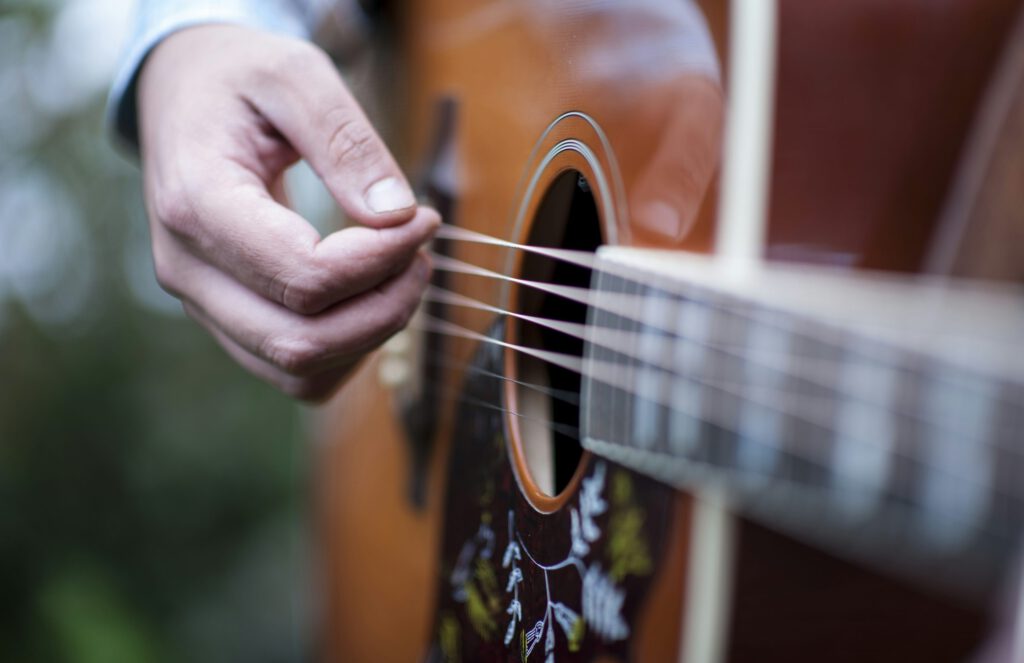Country music has always revolved around storytelling, but the guitar has been its voice of character and grit. The players who shaped country guitar did more than provide rhythm. They created styles that blended blues, folk, swing, and rock into the unmistakable sound of the genre. Below is a look at ten of the most influential country guitarists of all time, along with the reasons their contributions remain unmatched.
1. Chet Atkins
Chet Atkins is the single most influential country guitarist. Known as “Mr. Guitar,” he pioneered the smooth, fingerpicking “Nashville sound” that redefined the genre in the 1950s and 1960s. Atkins blended Merle Travis–style alternating thumb picking with jazz voicings and melodic precision. His ability to play bass lines, chords, and melody simultaneously made him a one-man orchestra on guitar. Beyond playing, Atkins also shaped Nashville as a producer and helped bring country music into mainstream popularity. His technical skill and musical intelligence make him the cornerstone of country guitar.
2. Merle Travis
Merle Travis gave country guitar its rhythmic heartbeat. The style known as “Travis picking” uses a steady thumb alternating bass notes while the fingers pick melody and harmony on the treble strings. This approach influenced not only country but also folk and early rock. Songs like “Nine Pound Hammer” and “Cannonball Rag” show his mastery of groove and syncopation. Without Travis, modern country guitar accompaniment would sound completely different. He set the standard for generations of pickers.
3. Jerry Reed
Jerry Reed was both a virtuoso guitarist and a hit-making singer-songwriter. His playing combined blistering speed, quirky syncopation, and playful phrasing. Nicknamed “The Guitar Man,” Reed stood out for his originality. He could be funky, jazzy, and deeply country at the same time. Reed’s thumbpicking style was a direct extension of the Travis–Atkins tradition, but he added new rhythmic twists that no one had heard before. His recordings like “Jerry’s Breakdown” remain benchmarks of technical brilliance.
4. Roy Nichols
Roy Nichols was best known as the lead guitarist for Merle Haggard’s band, The Strangers. His Telecaster style defined the Bakersfield sound, a West Coast counterpart to Nashville’s polish. Nichols played with a sharp attack, crisp bends, and jazz-inflected runs that gave Haggard’s songs a unique flavor. Unlike more showy pickers, Nichols served the song with taste and restraint while still dazzling players who studied his solos. His work influenced countless Telecaster players who came after him.
5. James Burton
James Burton is one of the most recorded guitarists in history and a pioneer of the “chicken pickin’” style. His work on the Fender Telecaster helped give country its twangy electric voice. Burton played with Ricky Nelson, Elvis Presley, Emmylou Harris, and many others, proving his adaptability. His clipped, percussive picking mixed country, rockabilly, and blues. Burton’s influence stretches beyond country into rock and pop, making him a true cross-genre innovator.
6. Albert Lee
Albert Lee, though English by birth, became a cornerstone of country guitar in the United States. Known for his lightning speed and fluid runs, Lee brought new levels of virtuosity to the Telecaster. His hybrid picking technique—using both pick and fingers—allowed him to blaze across the fretboard with clarity. Lee played with Emmylou Harris, the Everly Brothers, and Eric Clapton, but his reputation rests on his ability to combine country twang with near-jazz complexity. For aspiring country guitarists, studying Albert Lee remains essential.
7. Doc Watson
Doc Watson brought flatpicking acoustic guitar into the country and folk spotlight. His precise, melodic runs set the standard for bluegrass guitar. Watson could transform fiddle tunes into dazzling guitar pieces, often at breakneck speed, while never losing clarity. Though his roots were in Appalachian folk, his technique shaped the way country and bluegrass guitarists approached the acoustic instrument. He showed that the guitar could take a lead role in rural American music instead of being just an accompaniment.
8. Brent Mason
Brent Mason is a modern Nashville session legend. Since the 1980s, his guitar work has appeared on countless country hits by artists like Alan Jackson, Brooks & Dunn, and George Strait. Mason’s hybrid picking, flawless technique, and stylistic versatility made him the most in-demand guitarist in country for decades. He can shift from blazing chicken pickin’ runs to smooth jazz voicings with ease. Mason represents the professional standard of country guitar in the studio era.
9. Vince Gill
Vince Gill is celebrated as both a singer and a guitarist. His playing is lyrical, melodic, and deeply emotional. Unlike some of the flashier virtuosos, Gill’s strength lies in phrasing and tone. He can shred when needed, but he chooses his notes with a songwriter’s sensitivity. Gill’s blend of traditional country picking and modern influences has made him one of the most respected figures in Nashville. His work demonstrates that guitar mastery is not only about speed but also about expression.
10. Clarence White
Clarence White revolutionized country guitar by bridging it with bluegrass and rock. Starting as a bluegrass flatpicker, White later joined The Byrds and helped create country rock. His invention of the B-bender with Gene Parsons allowed him to bend strings mechanically to mimic the sound of a pedal steel guitar. This innovation changed the vocabulary of the Telecaster forever. White’s creativity opened new directions for guitarists who wanted to blend tradition with experimentation.
Conclusion
The top country guitarists shaped more than a genre. They built techniques, tones, and traditions that ripple through all of American music. From Merle Travis’s thumbpicking to Brent Mason’s session precision, each of these players defined what the guitar could do in country music. Some leaned acoustic, others electric. Some focused on speed, others on tone. All of them left fingerprints that still guide guitarists today. Country music continues to evolve, but its foundation rests on these ten giants who turned six strings into the voice of a culture.




